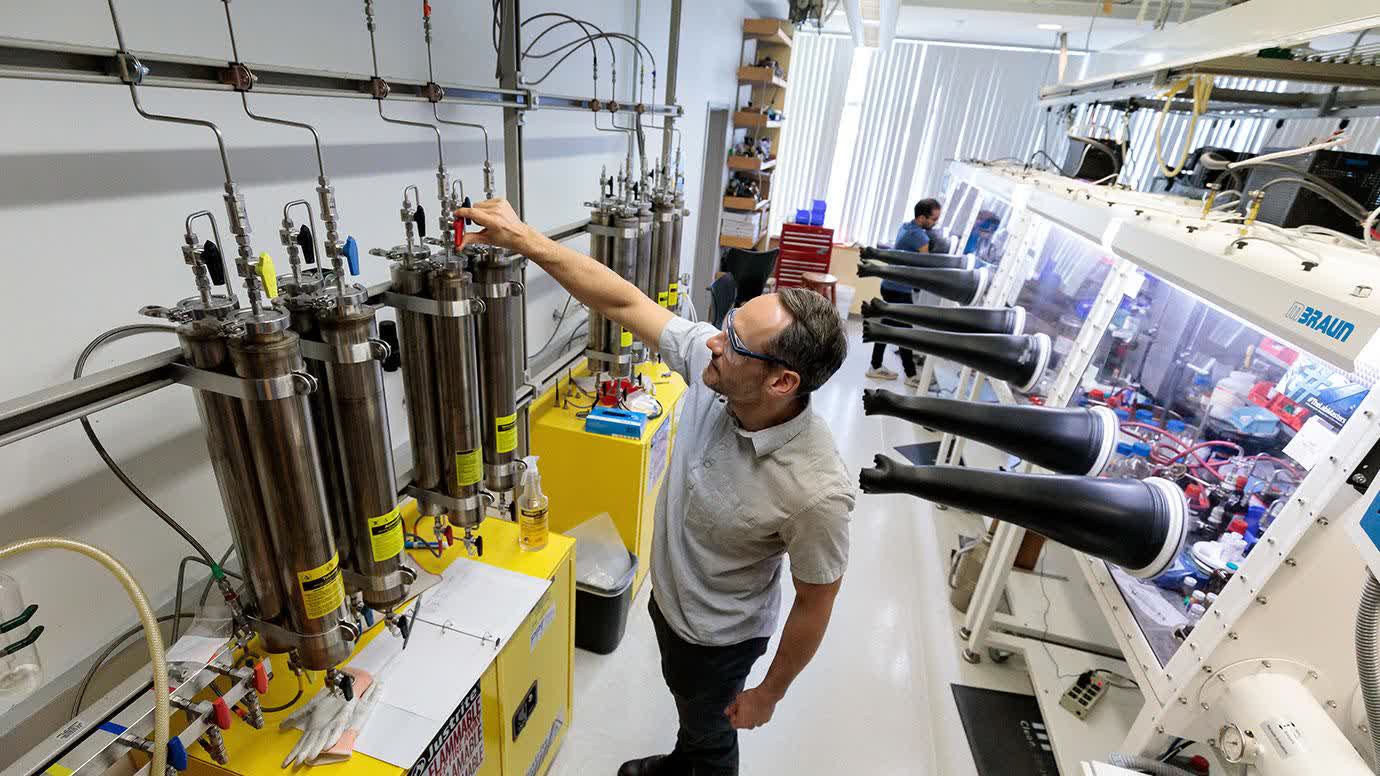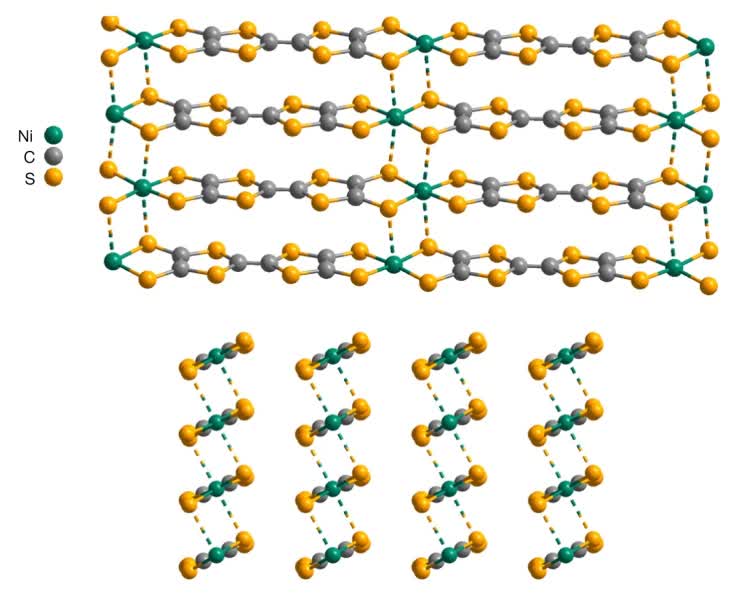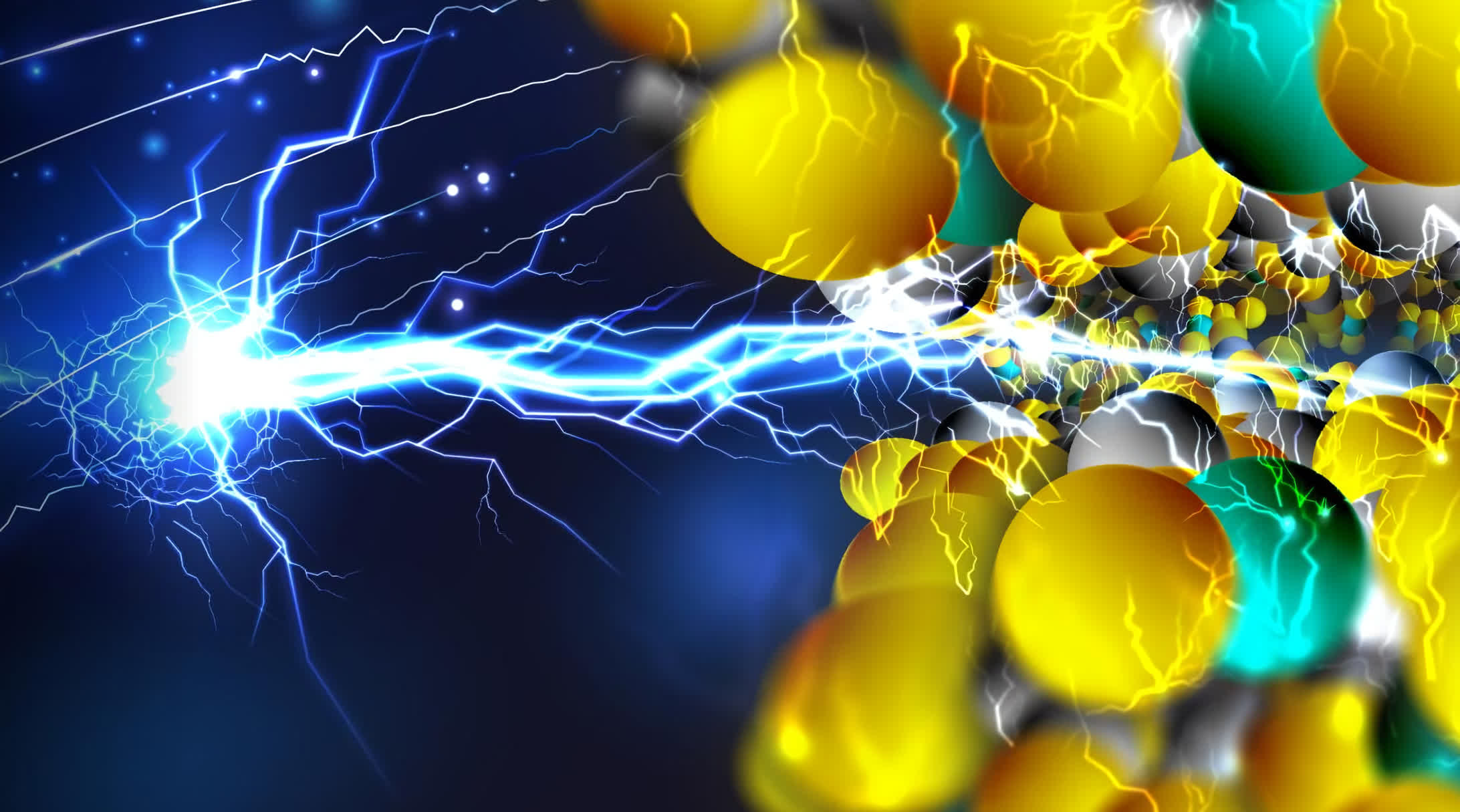TL;DR: Researchers at the University of Chicago have developed a material that can be made like a plastic but exhibits electrical conductivity properties commonly associated with a metal.
Traditional metallic and organic conductors are comprised of straight, closely packed rows of molecules or atoms. This allows electrons to flow through the material and makes them electrically conductive. Until recently, scientists thought a material had to have this straight-line structure to conduct electricity efficiently but that apparently is not the case.
Jiaze Xie, the first author on a paper describing the material, started experimenting with materials that were discovered years ago but were largely ignored by the scientific community. Specifically, he created chains of molecules comprised of sulfur, carbon and hydrogen interspersed with nickel atoms at regular intervals.
To the surprise of virtually everybody, the resulting material proved to be a strong electrical conductor. It was also extremely stable, able to withstand being subjected to heat, cold, air, humidity and even acid without incident.

Dr. John Anderson, senior author of the research, said the material is a dark powder that becomes iridescent and shiny when put on a surface as a film or pressed like Play-Doh. "From what we can tell, it's stable up to [about] 250 degrees Celsius," he said, adding that the material is similar in conductivity to graphite.
The scientists do not yet have a complete understanding of why or how the material is able to conduct electricity. Unlike the straight, closely packed rows that allow conventional conductors to work, the molecular structure of this material is disordered - like a messy pile of playing cards.
As best they can tell, the material appears to resemble lasagna with sheets or layers. Even if they rotate sideways and no longer resemble a neat stack, electrons can still pass so long as the disjointed pieces overlap and touch.

The material could be a boon for wearable medical devices and because it can withstand heat, humidity, acid and alkalinity, it could pave the way for a whole new range of durable electronics. It is flexible, too, as it can easily be sprayed or painted onto surfaces, or mushed into position like putty, and would not be limited by heat during manufacturing.
The tech could additionally lead to more practical electronic tattoos. Earlier examples, like this ultrathin temporary electronic tattoo, allow the user to control devices like smartphones simply by touching their skin.
The team believes they have just started scratching the surface of what is possible with the material. Xie said they think they can make it 2D or 3D, or perhaps even create a porous version. By adding different linkers or nodes, they might even be able to bake in additional functionality.
"In principle, this opens up the design of a whole new class of materials that conduct electricity, are easy to shape, and are very robust in everyday conditions," Anderson said.
The team's research has been published in the journal Nature. Unfortunately, there is no word yet on when the first commercial applications might hit the market.
